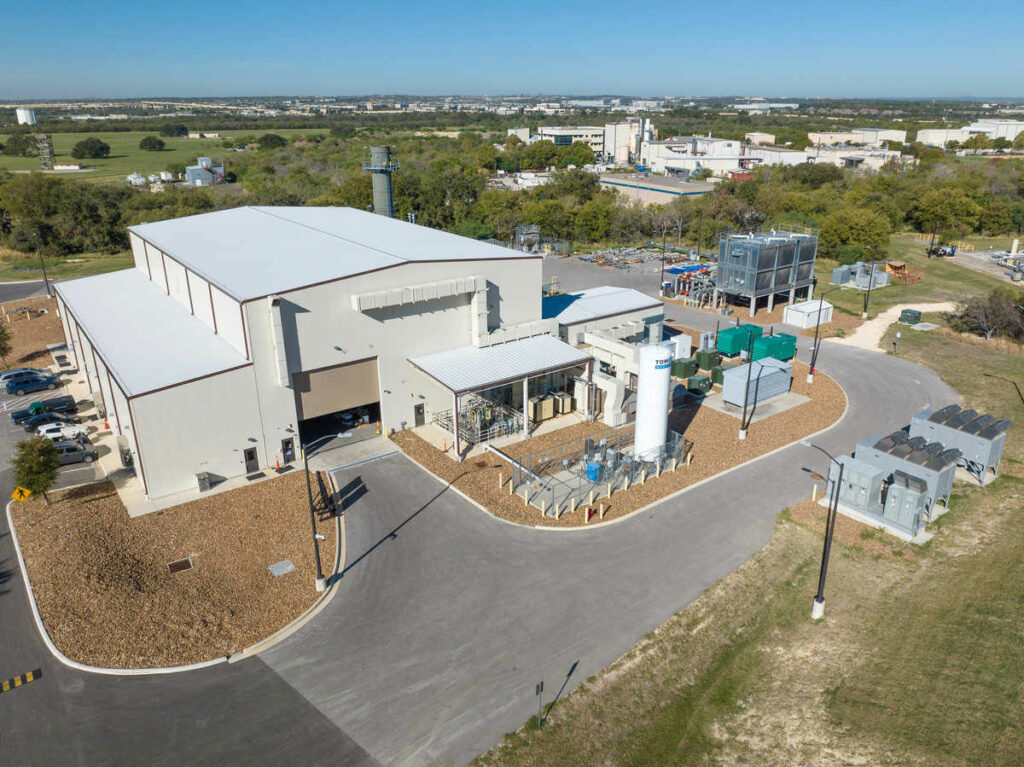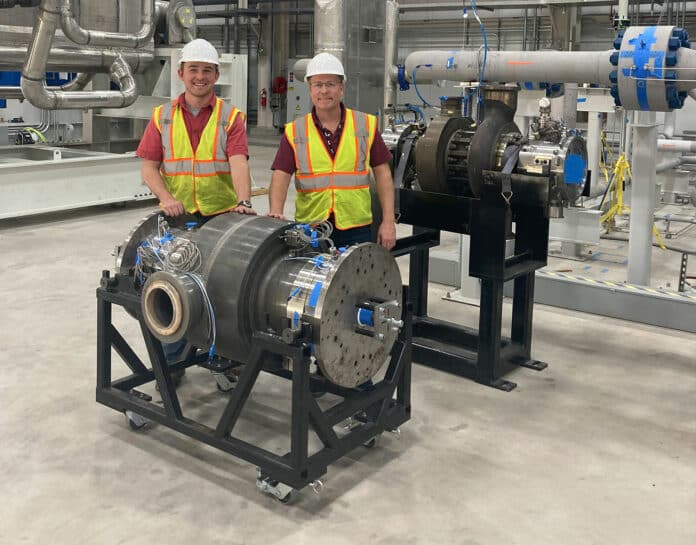Steam turbines are still used to generate most of the world’s electricity, but the situation is changing rapidly. Renewable energy sources like solar and wind are becoming more cost-effective and reliable, thanks to advances in energy storage and green hydrogen.
Another emerging technology that could disrupt the market is supercritical carbon dioxide, which enables much smaller and more efficient turbines than conventional ones.
Supercritical carbon dioxide (sCO2) is a fluid state of carbon dioxide that can adopt properties midway between a gas and a liquid. It promises to be much cheaper and 10% more efficient as a medium than water, using ten times smaller turbines. The U.S. Department of Energy estimates that a 65-foot (20-meter) steam turbine would shrink down to three-foot (one meter) if replaced with a sCO2 turbine.
To make this a reality, a new $155 million, 10 megawatt-equivalent power plant that uses supercritical CO2 technology is being built as the flagship project of the Energy Department’s STEP initiative. The STEP program, which stands for Supercritical Transformational Electric Power, was launched in 2016 by the Energy Department’s National Energy Technology Laboratory to advance the development and deployment of sCO2-based power systems.
On October 27, ribbons were cut at the STEP pilot plant in San Antonio as it was declared “mechanically complete” by project partners. The project, which is a collaboration between Southwest Research Institute (SwRI), GTI Energy, GE Vernova, and the U.S. Department of Energy, aims to demonstrate an innovative new method of higher-efficiency, lower-cost electric power generation.

Unlike conventional power plants, which use water as the thermal medium in power cycles, STEP is designed to use high-temperature sCO2. This improves the efficiency by up to 10% because sCO2 has better thermodynamic properties than water.
Carbon dioxide is nontoxic and nonflammable and behaves as a supercritical fluid above its critical temperature of about 31 °C (88 °F) and critical pressure of 74 bar (1,070 psi). At this point, it starts acting like a gas while having a density near that of a liquid. Water can, of course, go supercritical, too – it just takes a lot more energy.
The sCO2 power cycle technology is also compatible with concentrated solar power and industrial waste heat.
Using sCO2 as a working fluid means the STEP Demo’s turbomachinery is approximately one-tenth the size of conventional power plant components. This makes it possible to shrink the footprint and construction cost of any new facilities. About the size of a desk, a 10-megawatt sCO2 turbine could power up to 10,000 homes.
The construction of the STEP Demo site began on October 15, 2018, with SwRI, GTI Energy, and GE as the main partners, and the building construction was finished in 2020. The first operation of the compressor with supercritical CO2 was achieved earlier this year.
The consortium is making progress toward the commissioning of the pilot plant, which is anticipated to begin operations in 2024. However, there are still some challenges and tasks that need to be addressed before the plant can be fully functional.
“STEP will undoubtedly change the way we think about power generation,” said SwRI President and CEO Adam Hamilton, P.E, in the press release. “It’s exciting to officially launch this pilot plant, which is home to potentially revolutionary technology developed right here at SwRI.”
